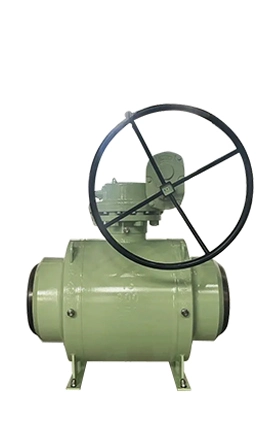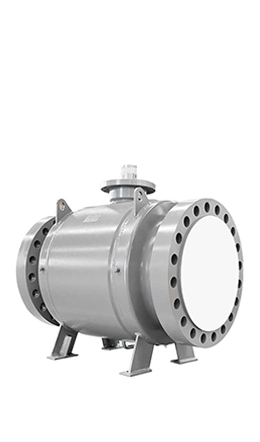Featuring a seamless one-piece welded body, this valve ensures zero leakage by eliminating flanges and gaskets, making it ideal for hazardous fluids and high-pressure/temperature applications (up to Class 2500, -196°C to 550°C). Its fire-safe and corrosion-resistant design (stainless/duplex steel) suits oil & gas pipelines, subsea systems, and cryogenic (LNG) services. The full-bore structure enables unrestricted flow and pigging, while blowout-proof stems and anti-static devices enhance safety. With minimal maintenance and 50+ year lifespans, it's the top choice for leak-critical, buried, or extreme-environment installations.


1. Structure and Design
One-Piece Welded Body: The valve body is constructed from a single piece of metal (e.g., carbon steel, stainless steel) with fully welded seams, eliminating flanges or bolts. This ensures:
Zero Leakage: No weak points or joints prone to leaks.
High Strength: Resists extreme pressure, temperature, and mechanical stress.
Ball Assembly: A spherical ball with a bore (hole) rotates inside the body to control flow.
Stem: Connected to the ball, the stem transmits torque from the actuator (manual handle, gear, or automated system) to rotate the ball.
2. Operation
Open Position: The ball is rotated so the bore aligns with the pipeline, allowing full flow. Minimal pressure drop due to full-bore design.
Closed Position: The ball rotates 90°, positioning the bore perpendicular to the flow path, blocking fluid/gas completely.
Seats: Spring-loaded or pressure-energized seats (metal or thermoplastic) create a tight seal against the ball.
3. Sealing Mechanism
Primary Seals: Ball-to-Seat Contact: Seats are pressed against the ball by springs or line pressure, ensuring leak-tight closure.
Fire-Safe Design: Secondary metal seals (e.g., graphite) activate if primary seals fail during a fire (API 607/6FA compliant).
Stem Seals: Live-Loaded Packing: Prevents leaks around the stem, even under thermal cycling or vibration.
4. Applications
Oil & Gas Pipelines: Subsea, transmission lines, and refinery systems.
Chemical/Petrochemical: Handling corrosive or toxic fluids.
Power Plants: High-pressure steam and water systems.
Cryogenic Systems: LNG storage and transport.
Underground Installations: Buried pipelines due to corrosion resistance and leak-proof design.
Full welded ball valves excel in safety, durability, and leak prevention, making them indispensable for high-stakes industrial applications.
1. Leak-Tight Integrity
No Flanges or Joints: The fully welded, single-piece body eliminates flanges, bolts, or gaskets, removing potential leak paths.
Zero Fugitive Emissions: Ideal for hazardous or environmentally sensitive fluids (e.g., natural gas, toxic chemicals).
2. Exceptional Durability
High Structural Strength: Resists extreme pressure (Class 600–2500+) and temperature fluctuations (-196°C to 550°C).
Corrosion Resistance: Constructed from materials like stainless steel, duplex steel, or Inconel for harsh environments (e.g., offshore, chemical plants).
Shock Resistance: Withstands pressure surges, vibration, and thermal cycling without cracking.
3. Minimal Maintenance
Long Service Life: Welded construction prevents wear from disassembly/reassembly.
Reduced Downtime: No need for frequent inspections or part replacements.
4. Safety and Reliability
Fire-Safe Design: Secondary metal seals (e.g., graphite) maintain sealing during fires (API 607/6FA compliant).
Blowout-Proof Stem: Stem is securely anchored to prevent ejection under high pressure.
Anti-Static Device: Prevents sparks from static buildup in flammable fluid applications.
5. High-Performance Applications
Bidirectional Sealing: Effective sealing against pressure from both directions.
Full-Bore Design: Minimal pressure drop, allowing unrestricted flow for pigging or cleaning in pipelines.
Cryogenic Compatibility: Suitable for LNG, liquid nitrogen, and other ultra-low-temperature fluids.
6. Installation Flexibility
Buried or Subsea Use: Welded construction resists corrosion and leaks in underground/submarine pipelines.
Compact Design: Lightweight compared to flanged valves, saving space in confined installations.
7. Key Applications
Oil & Gas: Transmission pipelines, subsea systems, refineries.
Power Plants: High-pressure steam and cooling systems.
Chemical/Petrochemical: Corrosive or toxic fluid handling.
Cryogenics: LNG storage and transport.
